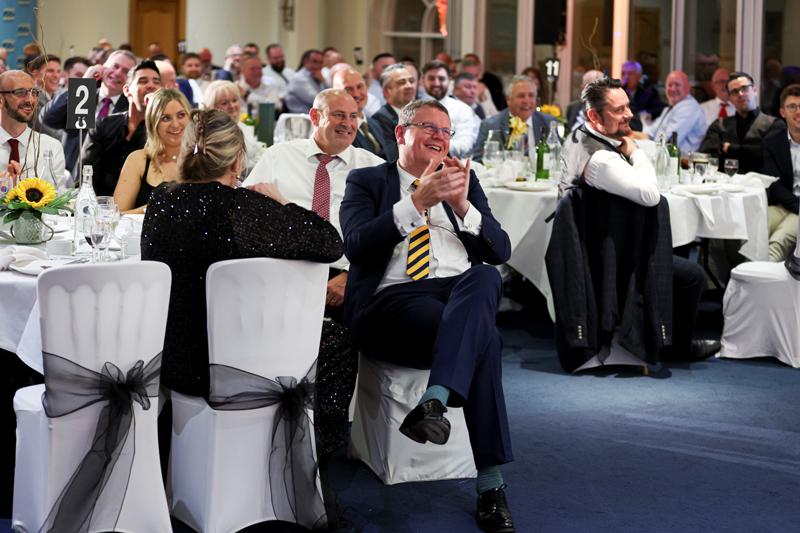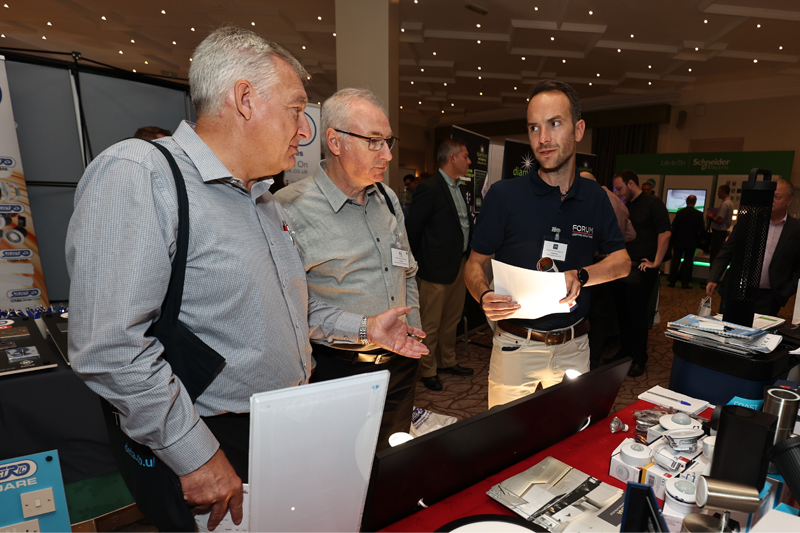PEW spoke with several members of the IBA management team to find out how the electrical wholesale buying group operates.
- How and why was the IBA formed?
David Whalley of Trafford Electrical was there at the beginning and is a past IBA Chairman so well placed to answer this question for us with ‘original truth’.
“I guess the answer to why the IBA was formed is the most obvious – to combine the purchases of a number of regional wholesalers with a view to improving buying prices. As there were already some established Buying Groups like the AED, the benefits were already known.
“The instigator was Glen Kerfoot, of Litestar Blackpool. In May 1993, Glen faxed 13 wholesalers in the North West, suggesting a Buying Group. The first meeting was in Chorley on 29th May 1993, attended by M-D Elec Workington, Mr Ohms Southport, Mr Ohms Morecambe, Litestar Blackpool, Acorn Electrical Wigan and St Helens, Mark Owen Electrical Supplies, Bolton. The agenda was to name the Group, decide what products to buy, the regularity of the meetings (on the last Saturday of each month!) and interbranch trading.
“At the second meeting on 26th June, when Trafford Electrical first attended, the Rules and Conditions of the Association were agreed. There were 7 rules, on one sheet of paper (ahem). The Membership Fee was £150. Not for the last time, the subject of discussion was cable!”
“It is a testament to IBA Values that M&D, Mr Ohms, Acorn, Trafford, Greenwood, MH Electrical who all joined within those first few early months are all still active Members of our IBA community almost 30 years later!”
- What are the criteria for joining and what are benefits for independent wholesalers?
Paul Jenner, IBA COO, is the first contact for new Member enquiries. He responds; “Simply put, we are and always have been a Group for Established Reputable Electrical Wholesalers. In order for Membership to generate a return on investment, we look for a member to be turning over £500k per annum. We would want to see a full set of accounts to prove this level. With this minimum spend, we would expect a member to be generating savings between two and three times the cost of their membership. However, this does vary depending on the individual member’s mix of spend and of course what proportion of their spend they can make through our group’s preferred suppliers. All potential Members are encouraged to do our ‘Top 10 Challenge’, which shows if group membership will provide ROI.”
- How does the IBA select its key industry suppliers?
Paul heads up the Supplier negotiation for the Group, chairing the Commercial Committee which is formed from volunteering IBA Members, annually elected to represent the entire Membership.
“We are a Group that is run by its members for its members. In terms of suppliers to the Group, either members or suppliers make recommendations that are discussed by the Group’s Commercial Committee. The Group looks to push its spending through a limited number of suppliers and therefore maximise the benefits that our Group members enjoy. As such, we look at each potential supplier on its merits. We seek to understand if they will add value to the Group’s current offering or only serve to dilute our existing spend with other suppliers. We look at product, marketing strategy, distribution strategy (favouring suppliers who respect the role of wholesalers in the supply chain), service levels, quality assurance and, of course, commercials. Only once recommended by the Group’s Commercial Committee is the deal put to the entire membership for final signoff.
“With lighting suppliers, the Group has additionally chosen to only accept applications from members of the LIA. This offers the membership and the membership’s customers, additional confidence that the product being offered is indeed fit for purpose.”
- Have IBA members recently experienced any supply issues due to factors beyond their control?
Mark Ashworth of ABM Electrical is IBA Elected Commercial Director and is directly on the front-line of contractor supply and customer service. He responds; “A range of products that seems to be out of our control is decorative wiring accessories. In China many of these products still have a heavy reliance on manual labour to produce. Due to social distancing measures in manufacturing process, this has significantly slowed down the ability to produce these products.
“The suppliers I have spoken to have chosen to focus on the supply of popular ranges such as the brushed effect steel finishes, whilst finishes such as antique brass are delayed until further notice. The choice for the consumer for this range of products seems to be reducing by the day.
“We are seeing similar examples where choice is being limited.”
- How difficult has it been for IBA members to judge levels of demand following extended periods of closure over the last 18 months?
ABM Electrical in Manchester was open throughout the pandemic to service essential supply, obviously with Covid measures in place. Mark responds; “The last eighteen month has pushed a greater emphasis on forecasting and forward ordering.
Forecasting in uncertain times remains problematic. All our crystal balls have become more opaque, but the value of true partnership between wholesaler and supplier is more important than ever. Placing timely orders on the wholesaler’s part, combined with providing as accurate as possible lead times from suppliers along with timely communication if things change is essential.
“By working together, we have not just survived the past 18 months but had a record 18 months.
“Since the last lockdown, obtaining products and price rises have brought different challenges. Forecasting has been essential. We have placed forward orders for three to six month stock to secure product and to delay proposed price increases.”
To find out more about IBA click here



